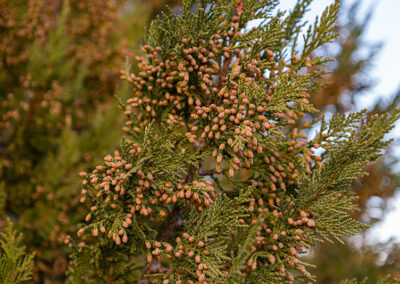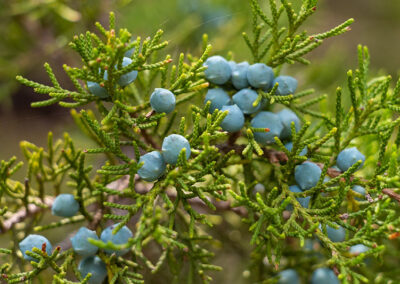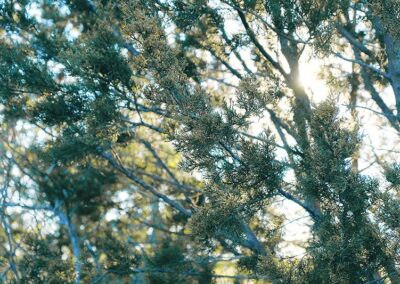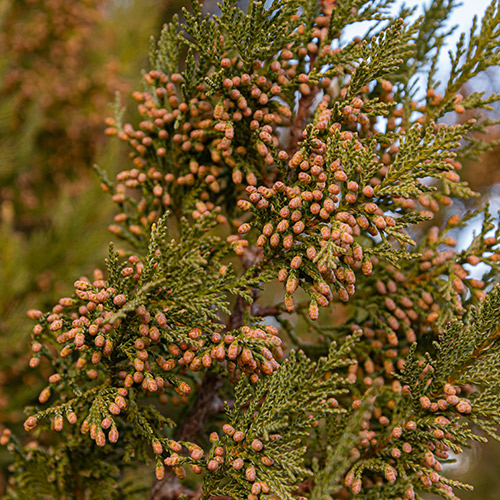
Mountain Cedar

Pollen Type: Tree
Cross-Reactivity: Other Cedars, Other Junipers, Oriental Arborvitae
HS Allergy Extract: Cedar, Mountain
Family: Cupressaceae
Genus/Species: Juniperus ashei
Common Names: Mountain Cedar, Ashe Juniper, Rock Cedar, Mexican Junipar, Texas Cedar
Distribution: Arkansas, Missouri, Oklahoma, Texas
Locations: Most common in Texas, often growing near Live Oak. Found in Hill Country, plateaus, and along limestone canyons.
Pollinating Period: December-February
Pollination Method: Wind-pollinated
Description: Despite its common name, Mountain Cedar is a juniper tree. This drought-tolerant evergreen appears as a large shrub or medium-sized tree, up to 30’. Its bark is reddish-brown and peels in long strips, eventually developing into shallow fissures as the tree ages. Its bright green feathery foliage grows in dense sprays. The scale-like leaves are 1/16”-3/16” long, are bluntly pointed, and have tiny teeth. Mountain Cedar is dioecious, meaning that male and female cones grow on different plants. Male trees grow pollen-producing cones that are oblong, yellow-brown, about the size of a grain of rice, and grow on the tips of the branchlets. Female trees grow berry-like seed cones 1/8”-3/16” long. They have a soft, pulpy texture and appear green, later maturing to a purple color several months after pollination. Many people are allergic to the Mountain Cedar pollen, resulting in outbreaks of “cedar fever” in late winter.




